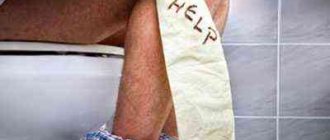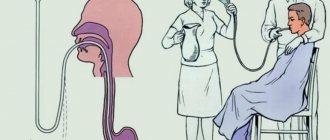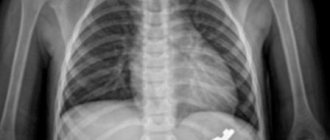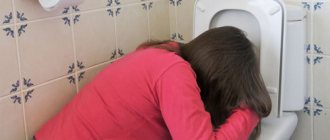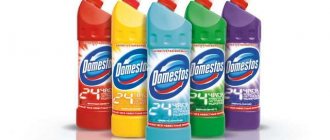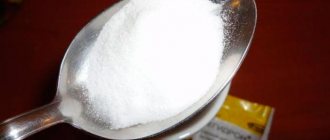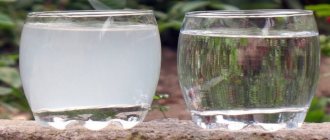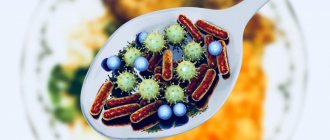Gastric lavage in children is carried out in case of food poisoning, drug and chemical intoxication, as well as intestinal infections. This manipulation falls into the category of first aid. Timely cleansing of a child’s stomach can save his life or prevent the development of serious consequences. Therefore, every responsible parent should know the washing technique, as well as have a set of necessary tools.
It should be remembered that gastric lavage is advisable only in the first hours of poisoning. Further, toxic substances are absorbed into the blood and have a detrimental effect on the vital organs and systems of the body.
Method of gastric lavage at home
Despite the fact that modern medicine does not recommend self-washing in case of poisoning, in some cases this therapeutic method is necessary, especially if the type of toxic substance and the time of poisoning are precisely known, and emergency medical care is delayed.
Gastric lavage in children at home can be done in two main ways:
- Simplified . The child is given 4-6 glasses of ordinary clean water to drink at a temperature of 35 to 37 degrees (which will not cause hypothermia or, conversely, overheating of the gastrointestinal tract, slow down intestinal motility and prevent further transport of toxic compounds to the middle and lower parts of the gastrointestinal tract). After 1-2 minutes, they help him induce artificial vomiting by pressing on the root of the tongue. After the working substance is released, if necessary, the procedure is repeated until the liquid becomes completely transparent. The obvious disadvantages of the method are the prohibition of use in case of poisoning with petroleum products, gasoline, kerosene, strong oxidizing agents, and any cauterizing substances. In this case, the child himself must be fully conscious, his basic reflexes (including swallowing) are fully preserved. As an alternative to water, a weak solution of baking soda can be used, which is effective against alkaline pathogenic agents. As a desirable addition;
- Classic . The standard express lavage method requires certain skills and equipment, and therefore can only be performed by an emergency medical team. In this case, a probe and corresponding instruments are used. An improperly organized event can cause a significant deterioration in the condition of a small patient, up to suffocation, rupture of the tissues of the esophagus and stomach.
At what age can the procedure be performed?
You can cleanse yourself of toxic substances from the first days of life. A baby can be poisoned in the first hours of birth. For children under 4 months of age, treatment is carried out only using the probe method and only by medical specialists. It is prohibited to install the tool yourself!
Starting at 4 months, parents can cleanse the intestines and stomach with enemas, and have a tube installed in the hospital.
At one year old and older, it is easier to rinse the stomach. You can induce vomiting by applying pressure to the root of the tongue and force the child to drink a large volume of the solution.
Gastric lavage in children through a tube
The procedure for flushing a child through a tube can be carried out by qualified medical specialists in a hospital, outpatient clinic, or directly at home.
The basic equipment includes a special rubber tube, with a diameter of 5 to 7 millimeters and a length of about 70 centimeters, as well as a funnel. Both items are sterilized and stored in a sealed plastic bag until use.
Algorithm for washing a child’s stomach through a tube:
- Taking the starting pose. In this case, it is most convenient to rinse the stomach while sitting. Before the procedure itself, the child’s body is covered with oilcloth to minimize the contact of the organ’s contents with the skin;
- Introduction . The child opens his mouth wide and breathes deeply through his nose, tilting his head slightly. The free end of the probe is carefully inserted behind the root of the tongue, while the patient closes his mouth and makes a series of swallowing movements. At this stage, it is necessary to monitor for deviations from the specified trajectory (the edge of the probe may enter the larynx or trachea). The device is immersed to a length from the small patient’s navel to the front teeth + 5-6 centimeters;
- Washing . After the probe is correctly inserted into the stomach, a funnel is put on the second end of the device and placed at the level of the abdomen, gradually pouring in the working fluid and raising the edge towards the head. The primary administered dose is from 500 to 800 milliliters;
- Drain . After the liquid passes into the digestive organ (its level in the funnel drops to the neck), the funnel is lowered down: it is filled with a rinsing substance, which is poured into a bucket. If necessary, the procedure is repeated several times until the rinsing waters become completely clean, after which the probe is quickly and carefully removed.
Points to take into account
To wash in case of poisoning at home, children under one year of age must be swaddled. Otherwise, they may harm themselves during the procedure.
It is one thing to perform the procedure on older children and quite another on newborns. Infants up to 4 months can carry out cleansing activities only through a specialized probe. Only qualified doctors can install it.
The volume of liquid for rinsing depends on the age category of the baby. For a newborn baby, 200 ml is enough. A 1 year old child is 1 liter. Children under 7 years old - 3-5 liters. For adolescent victims - 6-7 years old.
Contraindications to the procedure
The procedure for washing the digestive organs in children has a number of contraindications when the activity is either completely prohibited or can be used with significant restrictions and additions. Contraindications to gastric lavage:
- Natural and pathological narrowing of the esophagus;
- Systemic gastric and esophageal bleeding in the acute phase;
- Complex chemical burns of the internal surface of the gastrointestinal tract with powerful acids or alkalis. Gastric lavage with a tube method is allowed after an initial assessment of the condition of the mucous membranes;
- Severe forms of cardiovascular pathologies - persistent heart rhythm disturbances, angina pectoris and myocardial infarction;
- Absence of laryngeal and cough reflexes;
- Systemic seizures;
- Unconscious state. To carry out the main procedure, intubation is necessary in most cases.
How to rinse a child
- Before you start rinsing, you need to prepare a basin, oilcloth or towel, as well as a jar of rinsing solution. You can take any antiseptic composition, for example, a solution of potassium permanganate. Per liter of water, you need to add potassium permanganate powder on the tip of a knife so that the color of the prepared solution is pink.
- Force, ask, persuade the baby to drink as much of the prepared composition as possible. The effect of the entire procedure depends on the amount of liquid you drink. Children under one year old need to drink at least 500-600 ml. A child of five years old should try to drink a liter and a half.
- The temperature of the solution should be about 36-37 degrees. It is at this temperature that intestinal perilstatics slow down, which means that the absorption of poisons is suspended.
- After the liquid is drunk, ask the baby to open his mouth, and then use your fingers or a blunt object to press on the base of the patient's tongue. This will make him vomit. Before doing this, do not forget to tie an oilcloth or towel on the baby’s chest and place a basin for the vomit.
- After the child has vomited, repeat the procedure - give water and induce vomiting. This needs to be done several times until the water comes out almost clean.
Of course, gastric lavage is not a pleasant procedure. However, it is necessary and very effective.
Restoration of the body
Even a correctly carried out rinsing procedure in a child requires the implementation of rehabilitation measures and restoration of the gastrointestinal tract. Water or another substance completely washes out both pathological components and beneficial microflora from the organ, including gastric juice in fairly large quantities. In addition, mechanical effects on the mucous membranes of the organ can lead to their irritation.
The list of standard actions usually includes:
- Restoration of water-salt balance . After mild and moderate forms of poisoning, as well as the use of active gastric lavage, it is advisable to drink non-carbonated mineral water - Borjomi or analogues. As a supplement, Regidron solution is used;
- Strict diet . Spices, fast food, marinades, pickles, frying and fatty foods, rich cereals and legumes, and most vegetables are completely excluded from the diet;
- Taking medications . Prescribed exclusively by the attending physician. Usually these are antacids, stimulants of gastric juice, etc.
First aid for poisoning
Symptoms of poisoning are intoxication of the body. The child becomes lethargic and painful. He lies down a lot and often, despite his usual mobility. He refuses to eat, doesn’t want to play, it’s clear from his appearance that the child is sick. This may be accompanied by diarrhea, vomiting, dizziness, and high fever. If you notice similar symptoms in your child, try to find out or remember what your baby ate. Try to at least guess what could be the cause of this child’s condition. If a child has drunk something dangerous (which we will talk about later), you need to urgently call an ambulance. Tell the doctor over the phone about your child's condition, the food eaten or the poison drunk. If the doctor tells you to do a rinse before the specialists arrive, do so. After all, sometimes timely assistance can save a person’s life.
How is the procedure done in the hospital?
After admission to the hospital with a severe form of poisoning, the child is sent for an emergency examination. If there are no direct contraindications to the use of gastric lavage, then this procedure is prescribed first.
If the child is conscious and reflexes are fully preserved, then inserting a gastric tube is considered the recommended method of lavage (it is described in the previous section). When the small patient is unconscious, this procedure is modified, and the main steps are as follows:
- Intubation . Before washing the digestive organs of an unconscious child, it is imperative to insert a special tube into the larynx and trachea, which supports breathing and ensures guaranteed patency of the passages;
- Introduction . The small patient is laid horizontally and on his side, his torso is tilted down and his head is turned to the side. A thin tube with a diameter of no more than 5 millimeters is used as a zone; it is inserted into the lower nasal passage (according to the current position of the body);
- Washing . After correct insertion of the mini-probe, the working fluid is injected into the stomach using a syringe, after which it is sucked out with the same device.
Victor Systemov - expert of the 1Travmpunkt site
Gastric lavage is a method of cleansing the body of toxins and poisons that have entered the stomach, and is more often used for acute poisoning. The procedure improves the patient’s condition, promotes a speedy recovery, and saves lives.
At the first symptoms of poisoning, according to treatment standards for infectious diseases, it is recommended to take the bactericidal enterosorbent PEPIDOL (2 tablespoons every 3 hours until the condition is completely normalized).
Step-by-step instructions for the procedure
As mentioned earlier, it is produced for children from 4 months. Until this age, the procedure is carried out using a probe. This should only be done by qualified personnel. Because without certain skills and knowledge, this procedure is not safe to perform.
Without probe rinsing
To rinse the stomach in case of poisoning without using a probe, heat the liquid to 35-37 degrees. This will prevent the body from cooling down. It will also stop the spread of pathogenic substances.
According to the age category, give the child the solution to drink. After this, it is necessary to induce vomiting. To do this, press on the beginning of the tongue with a spoon or your fingers.
Probe rinsing
If you have certain skills and your child needs emergency assistance using a probe, familiarize yourself with the technique of such washing. This is a very important undertaking. If it is carried out incorrectly, it can cause vomit to enter the respiratory tract and cause a rupture of the stomach or alimentary tract.
For rinsing with a probe, a special tube measuring 0.4-1 centimeters is used. At its tip there is a rounding and a pair of holes. The solution flows through them.
Gently and slowly insert the tube into the child's mouth. From teeth to sternum. After you have injected it a little, make sure that it does not penetrate the trachea (coughing, hoarseness, lips will turn blue). The probe is inserted until vomit appears.
The procedure must be done slowly. The funnel should be located just below the stomach. After introducing the solution, the liquid is drained.
The event is carried out until a colorless liquid begins to come out. After this, the child must be hospitalized. Treatment of intoxication should be carried out in a hospital setting under the round-the-clock supervision of medical workers.
In what cases should the stomach be washed?
Indications
- Acute poisoning with food, mushrooms, medicines, alcohol.
- Narrowing of the gastric outlet
- Decreased tone of the muscle wall of the stomach or duodenum
- Intestinal obstruction
- When toxic substances are released into the lumen of the stomach. For example: urea secretion in chronic renal failure.
Contraindications
- Organic narrowing of the esophagus
- Acute bleeding from the esophagus or stomach
- Severe burns of the larynx, esophagus, stomach with acids and alkalis
- Cerebrovascular disorders
- Myocardial infarction, unstable angina, severe heart rhythm disturbances
- Unconscious state (without prior intubation). Intubation is the insertion of a special tube into the larynx and trachea to maintain patency of the airways and maintain respiratory activity.
- Absence of cough or glottal reflex
- Convulsions, convulsive state
What solutions can be used for rinsing?
In case of poisoning, children under 3 years of age are recommended to rinse their stomach only with a solution prepared from activated carbon tablets and warm boiled water or a weak solution of potassium permanganate. It is imperative that potassium permanganate (the resulting warm solution) be passed through a multilayer gauze filter. This is done in order to avoid crystals of the substance from getting on the mucous membrane of the esophagus and stomach, as this can cause a burn.
For children over 3 years of age, the following special solutions can be used:
- Sodium chloride solution (available at pharmacies). Before use, be sure to warm it up to approximately the child’s body temperature.
- Kitchen salt solution. It is prepared by dissolving 3 tablespoons of the substance in 6-7 liters of heated boiled water.
- A solution containing sorbents. Polysorb or enterosgel are often used as sorbents. It is prepared by dissolving 1 spoon of the medicinal substance in 100 milliliters of pre-boiled water (cooled to the child’s body temperature).
The prepared rinsing solution should be warm, approximately the same as the child’s body temperature. Thus, the absorption of toxic substances in the stomach slows down significantly.
Methods of gastric lavage
- Rinsing without using a probe
- Flushing using a thick probe
- Flushing using a thin probe
Gastric lavage without using a tube (“restaurant method”)
- If the patient cannot swallow the tube, then he can drink water on his own and then induce vomiting, thus emptying the stomach.
- You should drink in portions of up to 500 ml at a time. Then expect vomiting or stimulate it. In total, about 5-10 liters of water are required for effective gastric lavage.
Calculation of fluid and actions after flushing
For gastric lavage in children, the volume of auxiliary fluid is:
- newborns - 200 ml;
- children 1.5-6 months - 300-500 ml;
- children from 6 to 12 months - 500-700 ml;
- from one year - 1 liter + 100 ml x number of years.
During the first half hour, the child rests, and then they try to restore the lost volume of fluid and electrolytes orally: they give Regidron, Humanu Electrolyte, Smecta, Glucosolan, Orasan, and Hydrovit to drink. They are given warm, in small portions, every 10-15 minutes.
What is needed for rinsing?
- Wash solutions:
- Pure boiled water (20-24°C). Water for rinsing should not be hot, as it can dilate blood vessels and enhance the absorption of toxins, nor cold, which can cause stomach spasms.
- Saline solution (2 tablespoons per 5 liters of water). Prevents the movement of toxins and poisons further into the intestines, causing spasm of the gastric outlet sphincter.
- Light solution of potassium permanganate (potassium permanganate). Make sure that there are no small crystals of potassium permanganate left by stirring the solution well or filtering it. Since crystals can get on the mucous membrane of the esophagus and stomach and cause a burn. Potassium permanganate binds toxins and also has an antiseptic and antimicrobial effect.
- Soda solution (2 tbsp per 5 liters of water).
- Means for collecting rinsing water (basin, bucket, etc.). The rinsing water must be shown to emergency doctors, this will help in diagnosing the disease.
- Protective equipment for those helping the patient (waterproof apron, gloves). Vomit may contain viruses, bacteria, poisons and toxins that can enter the body and cause various diseases (for example: intestinal infection or viral hepatitis).
How to avoid mistakes
To prevent damage to your airway or esophagus, do not use the tube yourself.
It is necessary to maintain the concentration of the solution or use boiled water without impurities. The volume of liquid administered should be no less than the volume of vomit - if there is less, the stomach is not completely washed.
When vomiting, you should support the child's head to prevent him from choking. You should not count on a cure even with a high-quality rinse. This is only the first measure. A doctor's examination and treatment are required.
Gastric lavage using a thick tube
What is needed for rinsing?
- Gastric lavage tube; The probe itself is a tube made of a rubber mixture 80-120 cm long, a thick probe with a diameter of 10-13 mm, a thin one 5-9 mm. One end is cut off and the other is rounded and has side holes.
- Rinse solution (5-10 liters)
- Pure boiled water (20-24°C). Water for rinsing should not be hot, as it can dilate blood vessels and enhance the absorption of toxins, nor cold, which can cause stomach spasms.
- Saline solution (2 tablespoons per 5 liters of water). Prevents the movement of toxins and poisons further into the intestines, causing spasm of the gastric outlet sphincter.
- Light solution of potassium permanganate (potassium permanganate). Make sure that there are no small crystals of potassium permanganate left by stirring the solution well or filtering it. Since crystals can get on the mucous membrane of the esophagus and stomach and cause a burn. Potassium permanganate binds toxins and also has an antiseptic and antimicrobial effect.
- Soda solution (2 tbsp per 5 liters of water).
- Important! Correctly calculate a single dose of infusion (5-7 ml per 1 kg of patient’s body weight). The simultaneous introduction of a large volume of liquid into the stomach promotes its entry into the intestines.
- Funnel with a capacity of 500ml-1 l, mug
- Towel, napkins
- Container for rinsing water
- Gloves, waterproof apron
- Vaseline oil or glycerin
How to do it?
- Make sure the tube goes into the stomach
Options:
- The beginning of the release of gastric contents when the tube is lowered below the level of the stomach
- Using a Janet syringe, inject 20 ml of air into the stomach, while listening with a phonendoscope or directly leaning your ear against the abdominal wall in the stomach area for characteristic sounds.
- Draw the contents from the stomach into a syringe
- Attach the funnel to the probe , then, holding the funnel at the level of the stomach, pour 500-1000 ml of water into it.
- Then slowly lift the funnel to the level of the face or above the level of the stomach (if the patient is lying down). As soon as the water reaches the level of the mouth of the funnel, lower the funnel below the level of the stomach, then the contents of the stomach will begin to pour into the prepared container for collecting rinsing water. The first portion of rinsing water is sent for laboratory testing.
- When you pour water into the funnel, make sure that it is not completely empty, otherwise air will enter the stomach, which will complicate rinsing.
- Repeat the procedure until the rinsing water is clean (use prepared 5-10 liters of water).
- After completing the procedure, disconnect the funnel and slowly remove the probe , wrapping it in a napkin or towel.
Note:
- Correctly calculate the portion of a single injection of liquid (5-7 ml per 1 kg of patient body weight). Too much water introduced at a time helps to open the outlet of the stomach and allow toxins and poisons to enter the intestines.
- Monitor the amount of fluid introduced and removed (the difference should not exceed 1% of the patient’s weight). Absorption of large amounts of liquid into the body can lead to serious consequences (“water poisoning”).
Video:
Summarizing
Gastric lavage for a child
- a responsible procedure. It can prevent serious complications and save the baby’s life. If carried out incorrectly, the condition of a small patient can be aggravated. Aspiration is possible if vomit or fluid enters the respiratory system.
If the child's pharynx, esophagus, or stomach are injured, internal hemorrhage may begin. When a large volume of solution is administered, the patient may experience swelling of the brain and pulmonary organs.
To avoid sad consequences, if the child is still small, it is necessary to call an ambulance or take the child to a medical facility.
If washing needs to be done urgently, there is no way to wait for a team of medical workers or hospitalize the baby, carefully study the technique of the procedure.
To eliminate the risk of intoxication, keep chemicals, medications, and other items that could poison your child away from them. Before giving your baby fruits, vegetables, and berries, wash them thoroughly. Always monitor the quality of the food your child eats.
Quite often, poisoning of various etiologies occurs in children; food poisoning is considered the most common. This is explained by the fact that children's bodies are more susceptible to the effects of most toxic substances. When the first ones appear (fever, abdominal pain syndrome, attacks of nausea and vomiting, disturbances of consciousness, and others), parents should know what basic manipulations can save the situation. If assistance is not provided in a timely manner, irreversible processes and complications may develop.
This article will talk about how to rinse a child’s stomach at home and what you will need for this.
Every parent should be very attentive to their child and, when the first signs of poisoning appear, should know what can be done before the doctor arrives. In case of food poisoning or chemical intoxication, accompanied by intense pain and attacks of nausea, first of all it is necessary to rinse the stomach
. This needs to be done as soon as possible, before toxic substances are completely absorbed into the blood. It is very important to have an idea of what exactly the child was poisoned with, since there are a number of substances, the repeated passage of which through the esophagus can aggravate the situation (,).
Table of liquid volumes for gastric lavage depending on age:
Gastric lavage using a thin gastric tube
What is needed for rinsing?
- Thin gastric tube (diameter 5-9 mm)
- Vaseline oil or glycerin
- Rinse solution (5-10 liters)
- Pure boiled water (20-24°C).
- Saline solution (2 tablespoons per 5 liters of water).
- Light solution of potassium permanganate (potassium permanganate)
- Soda solution (2 tbsp per 5 liters of water).
What to wash with
For home washing, you can prepare a saline solution - 1 tbsp. l. salt per 2 liters of water. The same proportion with soda. The solutions can be mixed and given to the child. Better for older children.
Rinse with potassium permanganate very carefully. The proportion is only 2 crystals per 1 liter of water. The solution should be filtered through 4-layer gauze to prevent burns to the mucous membrane. If the poisoning is chemical, potassium permanganate is excluded. Children under 3 years old can use an aqueous solution of activated carbon or other sorbent. Calculation: up to 8 tablets of crushed coal per glass of water.
If a child is poisoned by household chemicals, it is necessary to neutralize the acids. This will help with gastric lavage with soda solution - 1 tsp. per glass of water.
In case of poisoning of a child with alkalis, acidified water, for example lemon juice, is used for these purposes - 1 tsp. for 1 liter of water. It is important to observe the exact amount of liquid for lavaging the child's stomach.
When does a baby need medical help?
You should definitely go with your child to see a doctor if your child experiences frequent regurgitation of food (reflux), as well as the following symptoms of the disease:
- bloody stools, severe diarrhea, persistent vomiting or vomiting blood;
- repeated pneumonia;
- the child is not gaining weight well;
- the child cries for more than two hours;
- refusal to eat and drink for a long period;
- massive vomiting after every meal;
- changes in behavior, the child is constantly sleepy, sleeps a lot, the reaction is slow.
The brochure was compiled jointly with the gastroenterologist of the Latvian Children's Hospital, Dr. Inita Kazhe.
